Faro, capital of the Algarve, has a much more Portuguese character than most tourist cities on the coast. Everyone who just passes through here, because of the airport, is missing a truly pleasant stay. Come and visit Faro and discover what others are missing!
Conquered by the Moors in 713 AD, the city of Faro, known as Ossónoba at that time, was part of the Caliphate of Cordoba and, later, of the Taifa of Seville, before being reconquered by the Christian king Afonso III in 1249.
Severely hit by the British fleet in the 16th century and by two major earthquakes, including the one from 1755 that devastated the entire city, Faro offers a real mix of architectural styles.
Disclosure: This post may contain affiliate links, meaning i get a commission if you decide to make a purchase through my links, at no cost to you. Please read my disclosure for more info.
Its picturesque Old Town (Cidade Velha) and its medieval walls, its narrow streets for strolling, its attractive marina, its well-kept parks and squares, its museums and churches are good reasons to visit Faro and to discover this unknown city.
Next, discover the 16 most beautiful places not to be missed in Faro and its surroundings, directions on how to get to Faro, how to get around in the city and, of course, what are the best times to visit Faro.
What to do in Faro – Top 16 Things to do in Faro
Sommaire
- What to do in Faro – Top 16 Things to do in Faro
- 1. Igreja de São Francisco
- 2. Palacete Belmarço
- 3. Vila-Adentro
- 4. Igreja da Misericórdia
- 5. Jardim Manuel Bivar
- 6. Marina de Faro
- 7. Museu Marítimo Almirante Ramalho Ortigão
- 8. Museu Regional do Algarve (Museu Etnográfico)
- 9. Mercado Municipal de Faro
- 10. Igreja do Carmo e Capela dos Ossos de Faro
- 11. Convento de Santo António dos Capuchos
- 12. Igreja de São Pedro
- What to visit near Faro
- 13. Estói
- 14. Ruínas Romanas de Milreu
- 15. Praia de Faro
- 16. Ria Formosa
- Itinerary to visit Faro and surrounding area
- Where to sleep in Faro
- Where to eat in Faro
- How to get to Faro
- How to move around in Faro
- When to visit Faro
1. Igreja de São Francisco
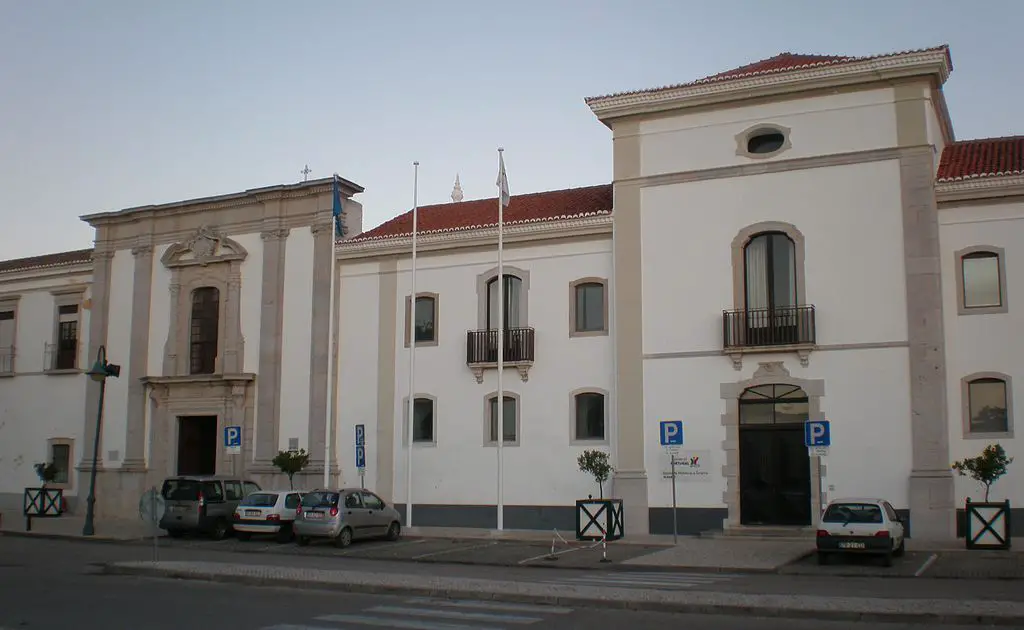
The church of the monastery of São Francisco, whose construction began in 1679, was expanded in the 18th and 19th centuries. It has a stunning white facade, while its Baroque interior combines magnificent woodwork and hand-painted tiles. You can also see the life of São Francisco represented on its impressive vaulted ceiling.
Personal advice: if you arrive in Faro by car, the free parking next to the church is a quiet and perfect place to leave your vehicle and then visit the city on foot!
2. Palacete Belmarço
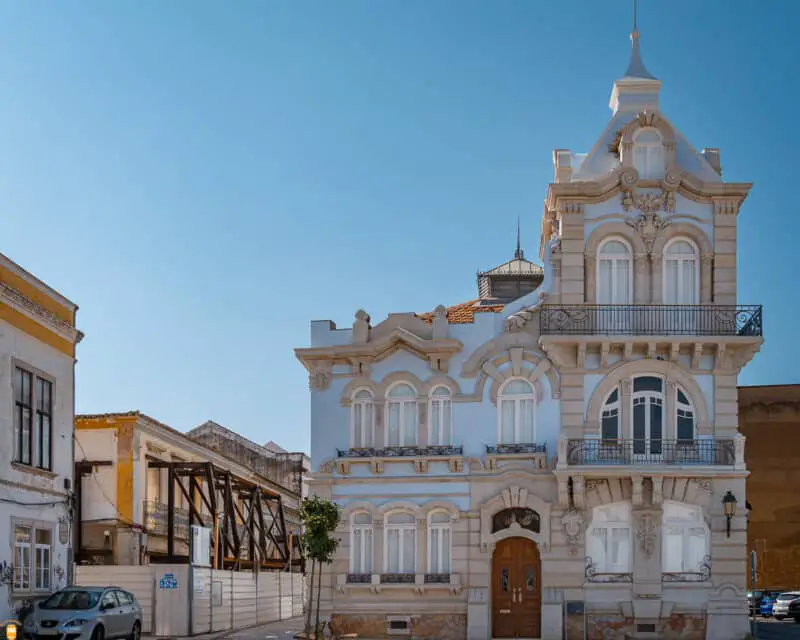
Palacete Belmarço is one of the most beautiful buildings in Faro. Originally, the residence of the wealthy merchant Manuel de Jesus Belmarço, built in 1912 by Manuel Joaquim Norte Júnior, the renowned architect of the time, today houses the city’s administrative services.
There you can admire many Art Nouveau motifs of the time: the lookout tower and its wrought iron balconies, the carved stone decorative elements, the head of a sphinx in limestone flanking the door and the two glazed-tile panels representing Portuguese monuments and landscapes, such as the Belém Tower and the Pena National Palace.
3. Vila-Adentro
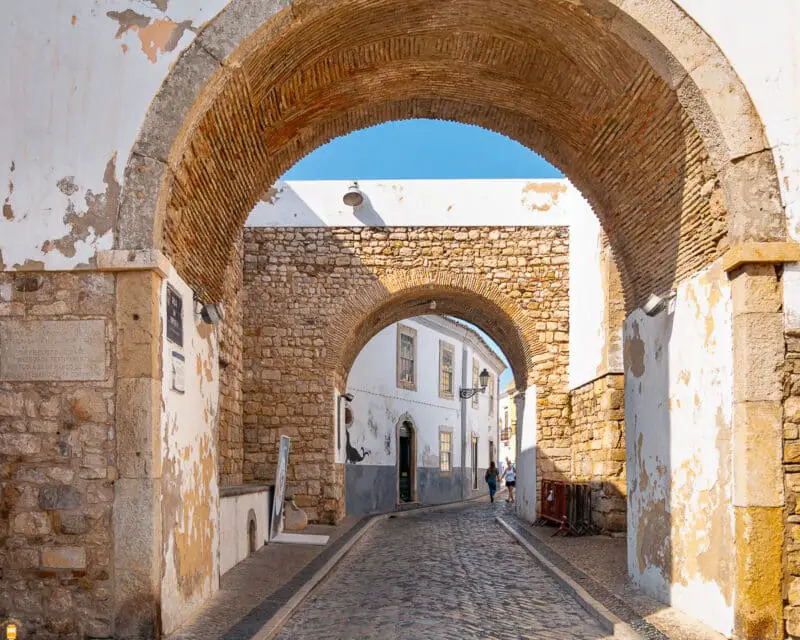
Vila-Adentro is the part of the city protected by the walls and includes many points of interest.
The arch Arco de Repouso allows you to enter or leave the Old City. Some of the oldest sections of the walls, improvements made by king Afonso III in the Moorish defenses, are found next to this arch.
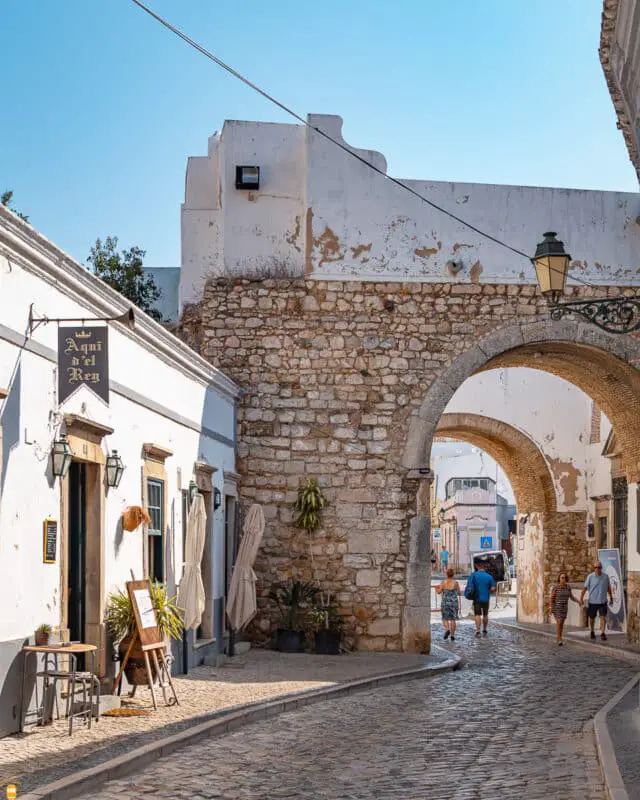
Faro City Museum, or the city’s local history museum, is located in the Renaissance convent Convento de Nossa Senhora da Assunção, in the old Jewish quarter. You can admire the paths of the Roman Algarve, monumental stones placed at the time of the Roman Empire, the mosaic of the Greek god Ocean of the 3rd century and Islamic domestic objects from the 9th to the 13th centuries.
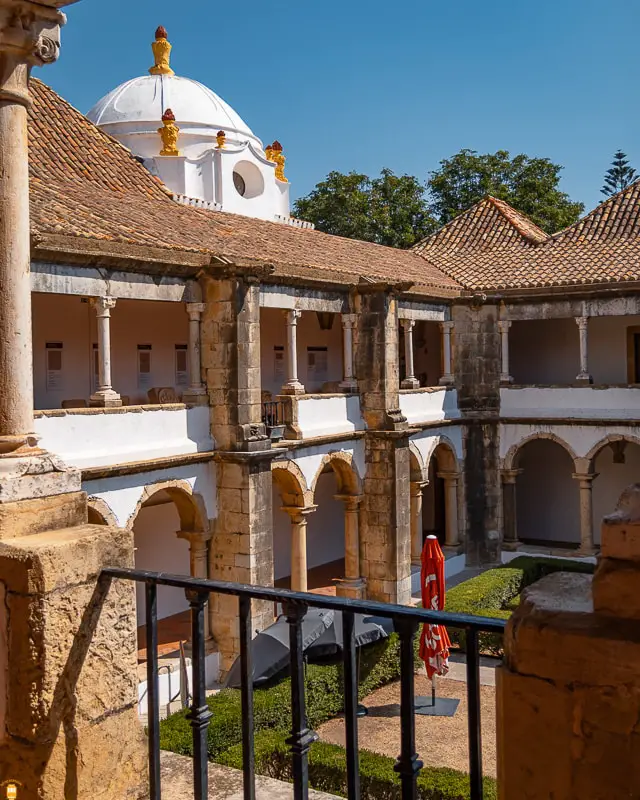


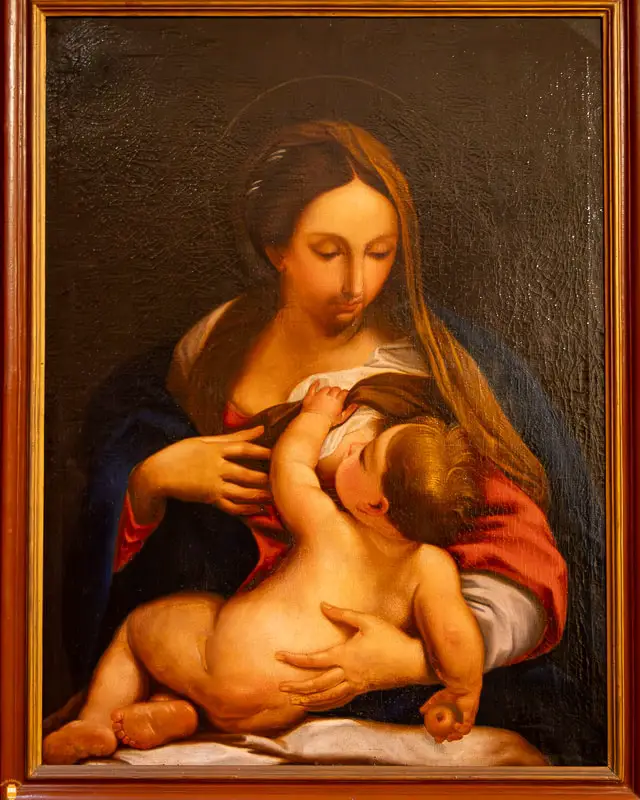
Faro Cathedral, completed in 1251, was severely damaged by the 1755 earthquake. Today, it presents a mixture of Renaissance, Gothic and Baroque architectural features.

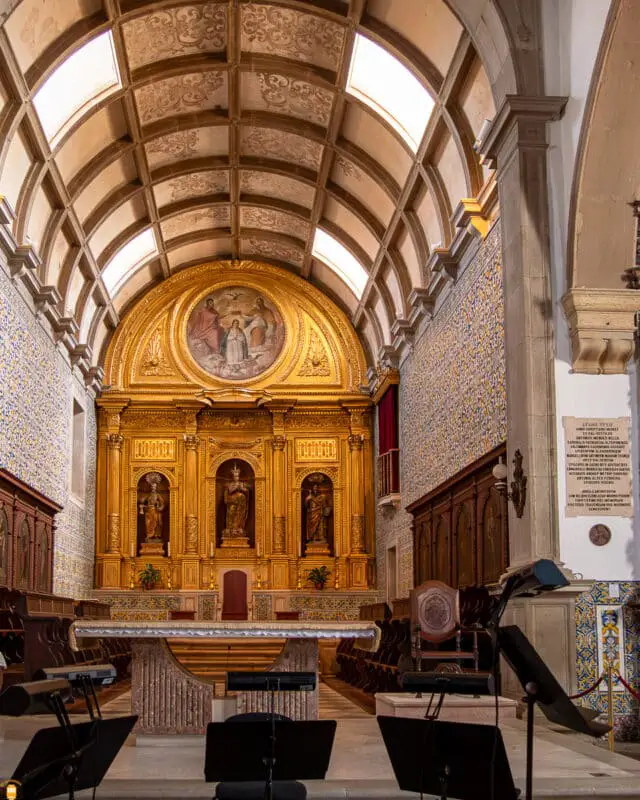
Do not hesitate to climb the tower to enjoy the splendid view over Ria Formosa and the fortified city.
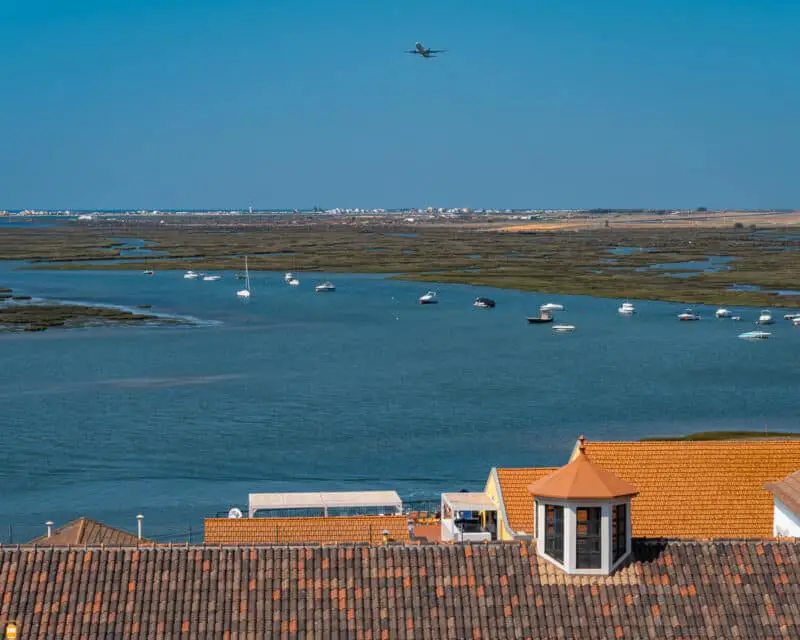
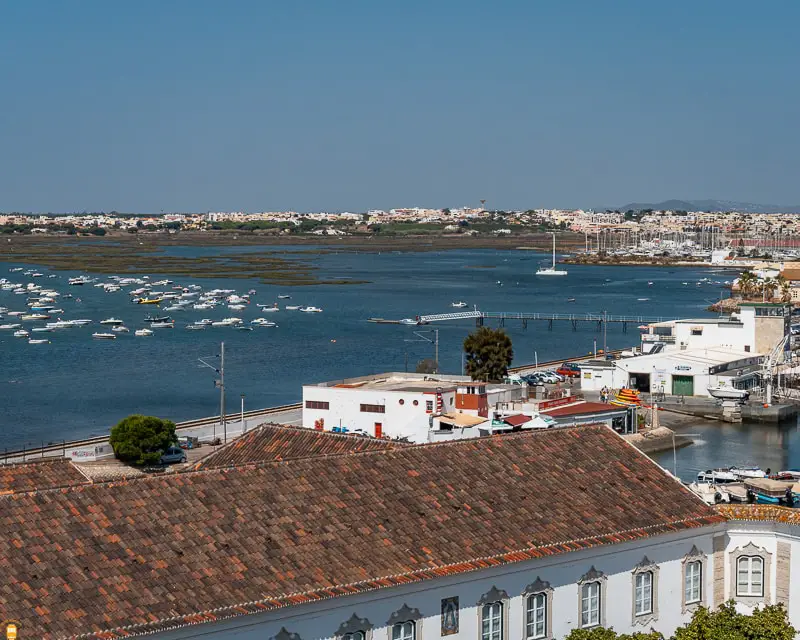
Another way in to the Old Town of Faro, the neoclassical arch Arco da Vila dates back to 1812. From the tower, accessible through the tourist office, be sure to admire the viewpoint and the storks that nest in Ria Formosa.


At the end of the square Largo da Sé, the arch Porta Nova connects the Old Town to the sea, from where boats depart on tours and visits to Ria Formosa.
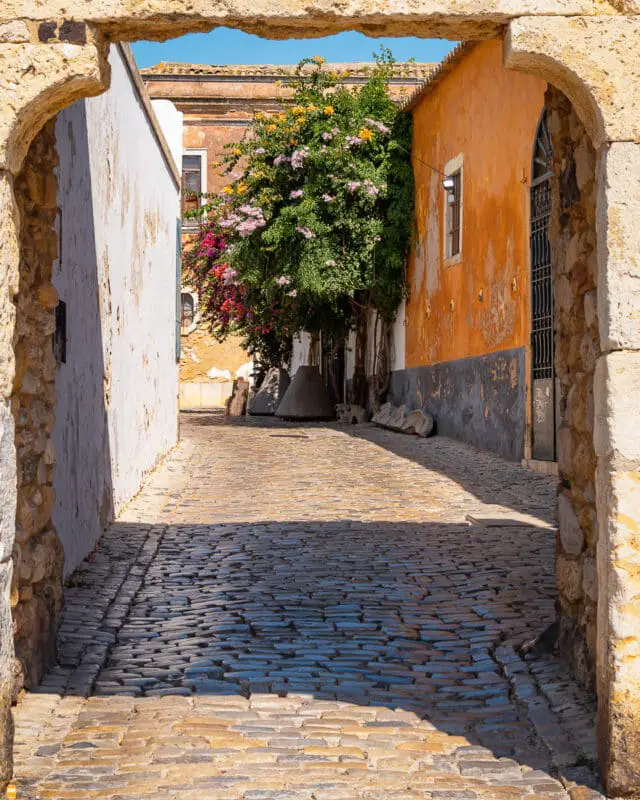
Faro Castle is now known as Fábrica da Cerveja, because it was transformed in the 20th century into an ale factory. It is located in front of the square Praça de São Francisco and its remains are integrated in the walls of Faro.
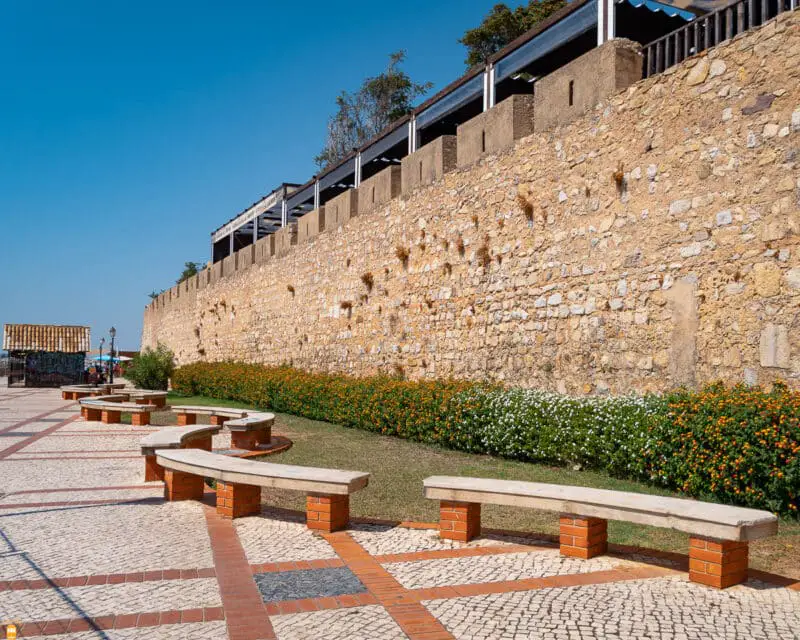
The castle was built in the Muslim citadel, in the mid 13th century, after the reconquest of the Iberian Peninsula. Its defenses were seriously damaged in 1596, when the English fleet set fire to the city on the way back from the expedition to Cadiz.
4. Igreja da Misericórdia
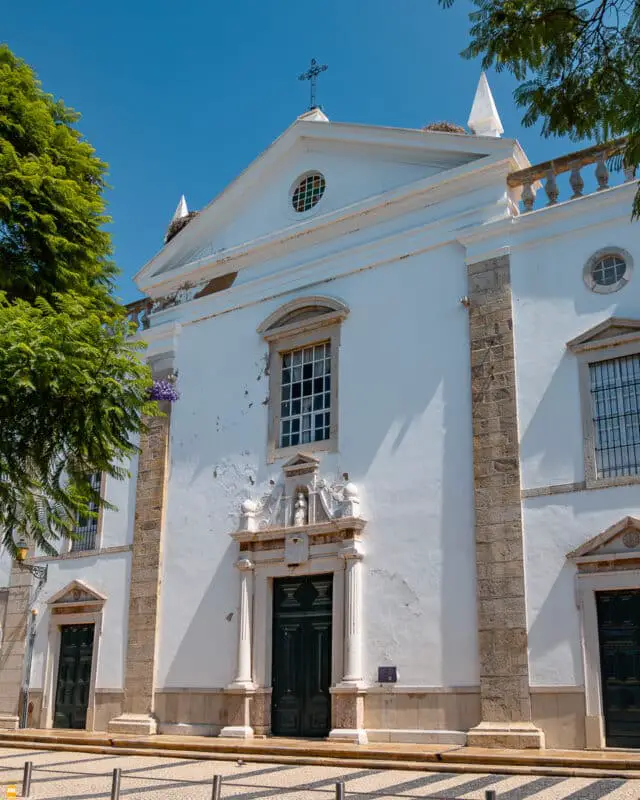
The church Igreja da Misericórdia dates back to the 16th century and is opposite to the arch Arco da Vila. This charming church was built in late Portuguese Gothic style, known as Manueline style.
The terrible 1755 earthquake caused so much damage that today its style is almost exclusively Baroque.
5. Jardim Manuel Bivar

It is one of the oldest and most emblematic places in the city, as it was already a square at the beginning of the Christian occupation.
The garden Jardim Manuel Bivar is considered the centre of the city, a space surrounded by important buildings, such as the hospital and the church Igreja da Misericórdia, built before the 17th century.
Customs and civil government buildings joined them between the 17th and 19th centuries. There you can admire, in particular, the superb facade of Banco de Portugal.

The garden was created here in the late 19th century and was called Jardim do Bacalhau (codfish) in the beginning because of its shape. In summer, fairs and cultural events take place at this place.
6. Marina de Faro
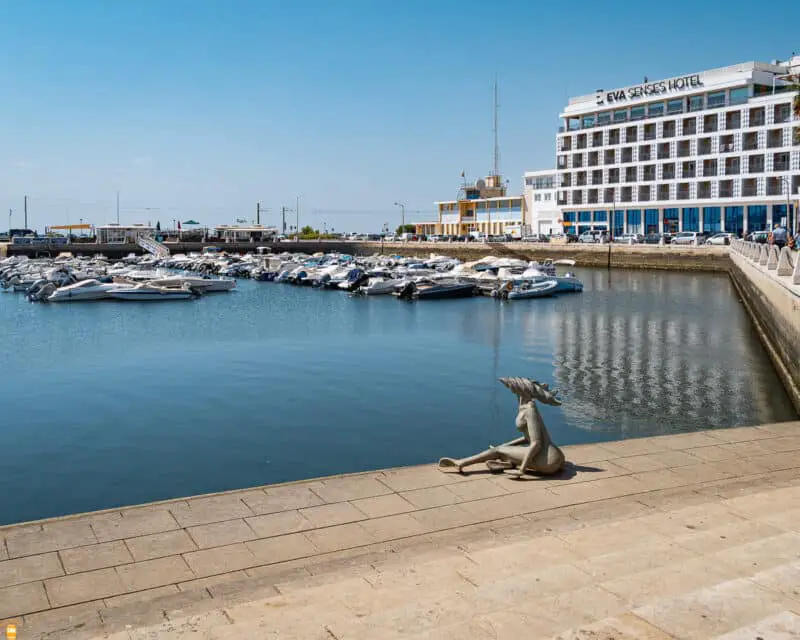
Faro Marina is a place where you can admire the yachts and take a break to cool off in one of the cafés located there. This is where the pier Cais da Porta Nova is located, from where boats depart for tours to the Ria Formosa Natural Park.

On mild summer nights, it is pleasant to stroll from the marina to the Old Town along the promenade. At the northwest end of the marina, you will find Faro Maritime Museum.
Information: are you staying in Faro or nearby and want to enjoy a magnificent sunset aboard a small boat? If that’s the case, book this activity and know that you will have the boat just for you and your family or better half. During this 1h30 tour, you will have the opportunity to enjoy a glass of champagne and admire the magnificent colours of the sunset in Ria Formosa.
7. Museu Marítimo Almirante Ramalho Ortigão
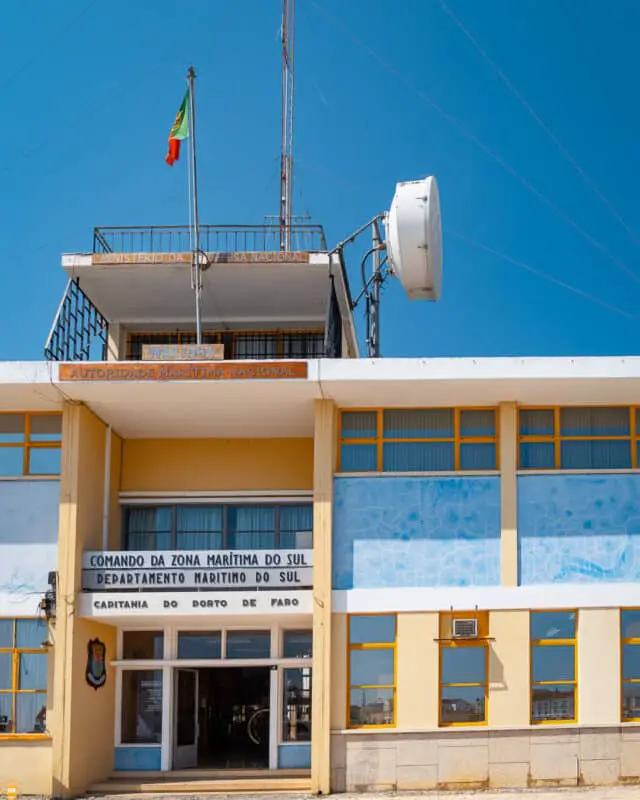
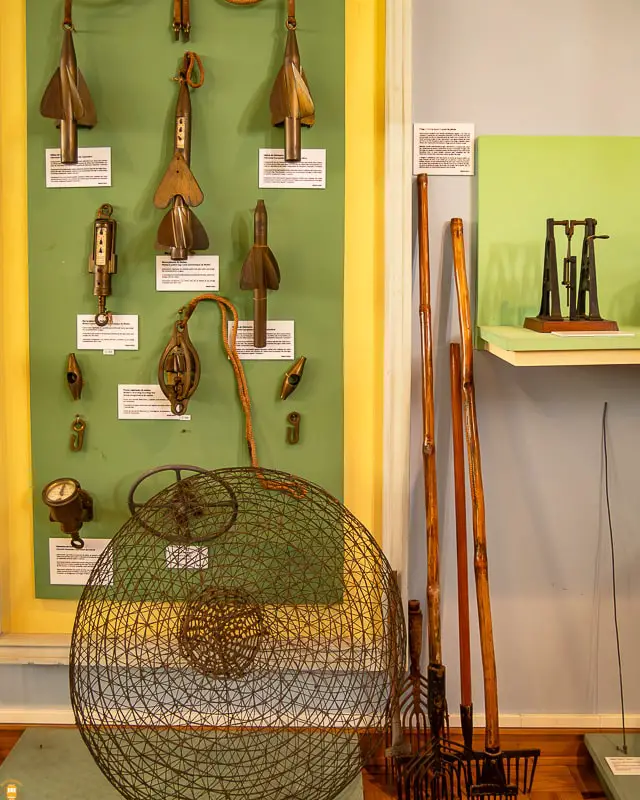
The Almirante Ramalho Ortigão Maritime Museum currently displays an ethnographic collection on maritime and fishing activity in the Algarve. Here, you can admire fishing boats and other boats, fishing instruments, equipment and much more.
It also presents interesting exhibitions about the time of the great Portuguese explorers, including a model of one of the boats that Vasco da Gama used to cross the Cape of Good Hope to India in 1498.
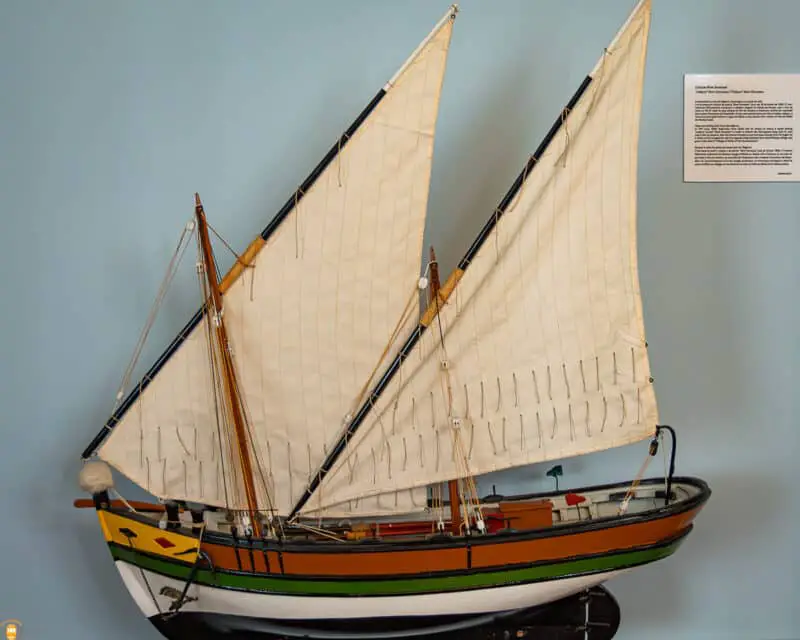
8. Museu Regional do Algarve (Museu Etnográfico)
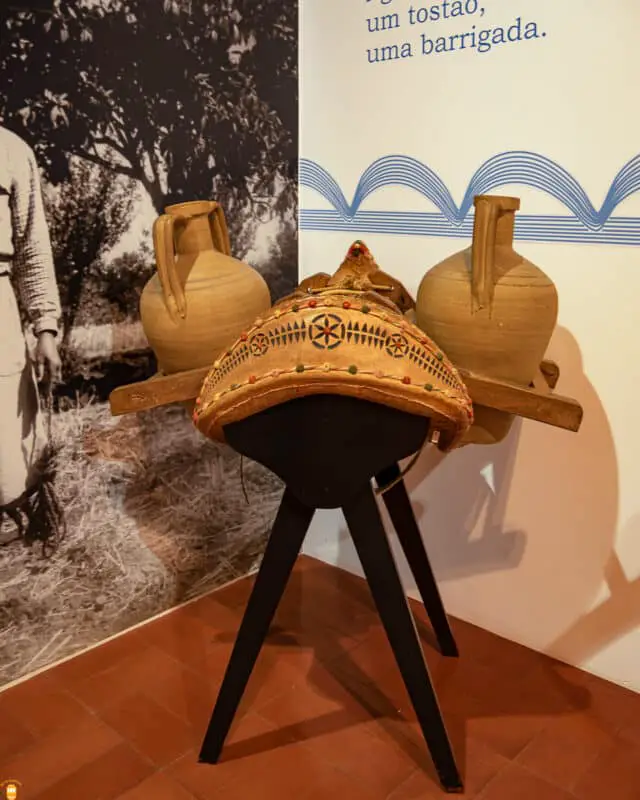

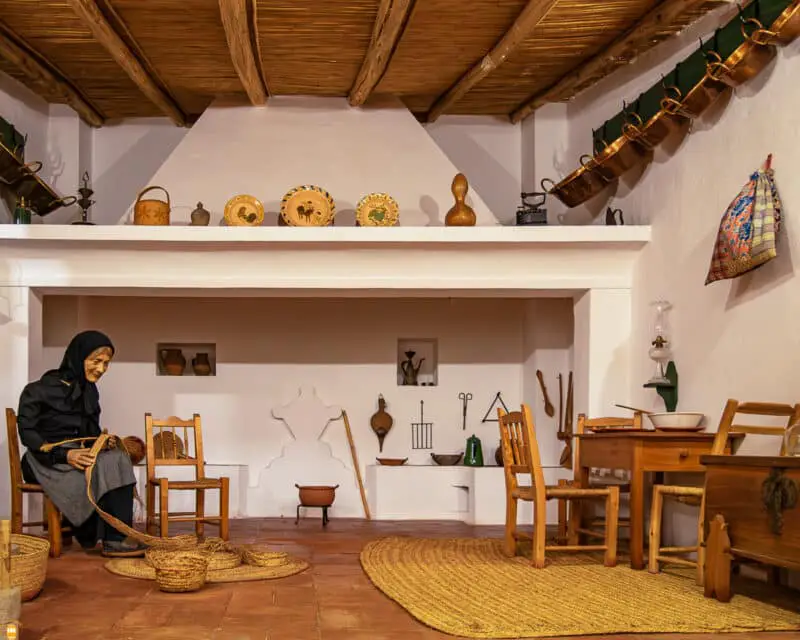
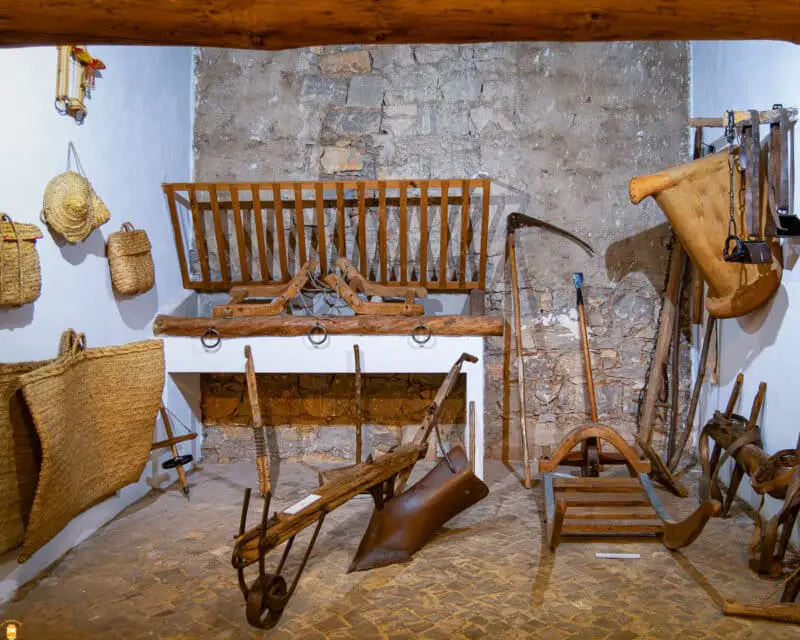
Dedicated to safeguarding local memory, this interesting ethnographic museum shows the daily lives of the inhabitants of the Algarve in other times.
From looms to fishing instruments and boats to wicker baskets, bamboo and palm leaves, discover regional folklore and observe an infinity of objects from the past. The museum also offers reconstructions of old habits and 19th century shop models.
9. Mercado Municipal de Faro

Faro’s city market is open every morning and until 14h00 in a beautiful white building. Inside, traditional shops sell fruit, vegetables, cereals, meat, bread and flowers.
In the afternoon, peace and quiet return and some shops function as a shopping centre. It is a meeting point where you will easily see Faro residents of all ages.
10. Igreja do Carmo e Capela dos Ossos de Faro
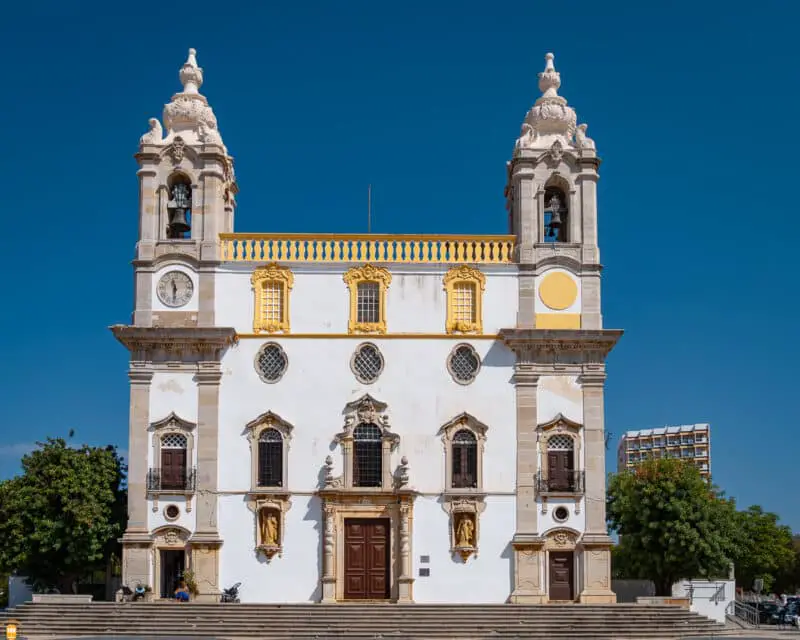
This stunning church is by itself a good reason to visit Faro. It is one of the symbols of the capital of the Algarve, with its spectacular facade and its two steeples.
A Baroque masterpiece completed in 1719 under the reign of D. João V, it was with gold from Brazil that its post-earthquake reconstruction was paid with. Inside, many golden cherubs await you.
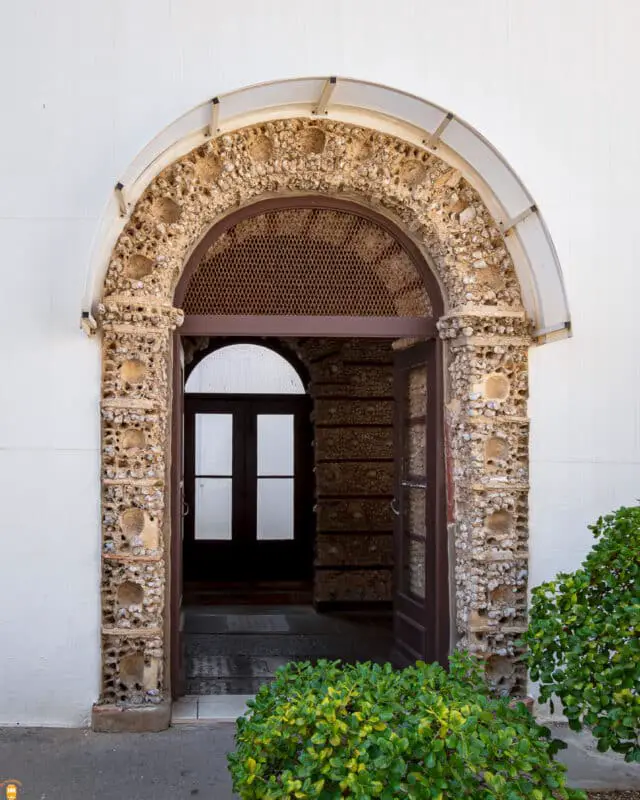
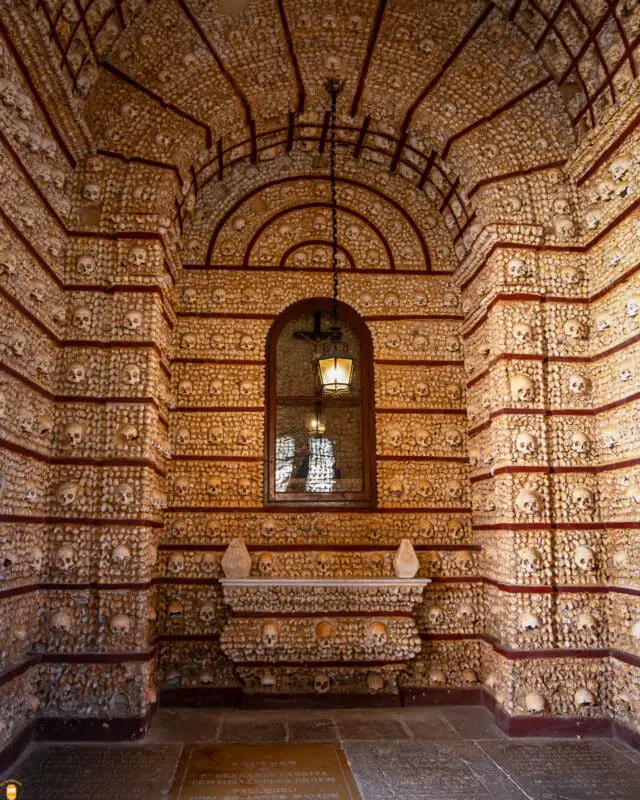
The Chapel of Bones (located at the back of the church) was erected with the skulls and bones of many monks and aims to reflect on earthly impermanence.
11. Convento de Santo António dos Capuchos
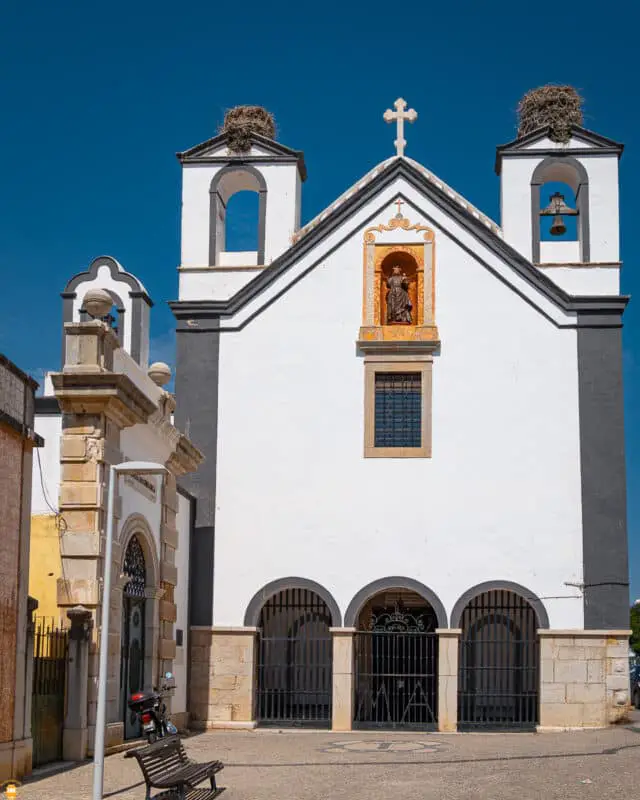
The simple facade of the convent Convento Santo António dos Capuchos, dating from the early 17th century, hides altars with gilded sculptures, historically decorated glazed tiles and a harmonious cloister.
After 1834, it served as a barracks and prison, then it was used in 1914 as an archaeological museum before resuming its religious function in 1973.
12. Igreja de São Pedro

This sober-looking church on the outside is richly decorated with polychrome glazed tiles. The chapel Capela do Santíssimo Sacramento has a magnificent gilded decoration.
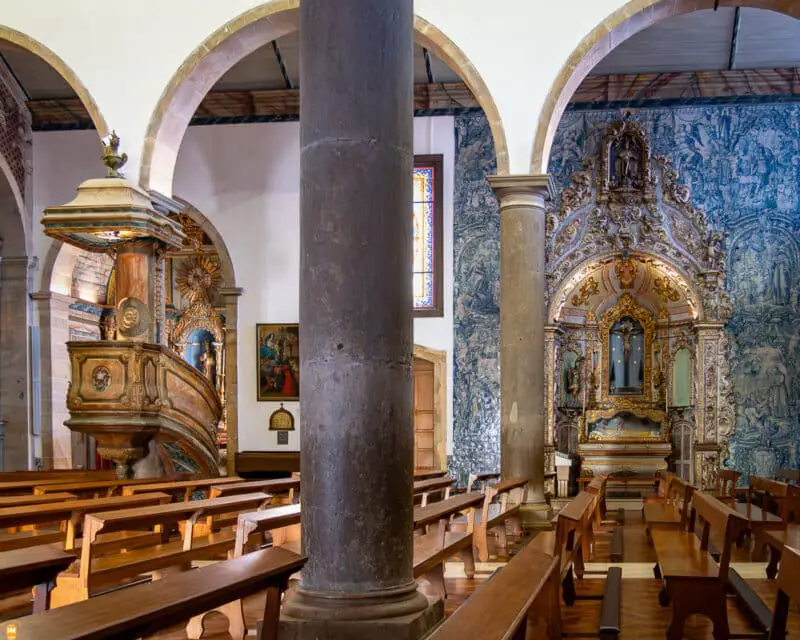
What to visit near Faro
13. Estói


Estói, a charming and peaceful village 10 km north of Faro, is a must-see after visiting Faro. There, you’ll find Estói Palace, a 19th century Rococo style palace and one of the most beautiful palaces in the Algarve.
The beautiful pink of the Estói Palace contrasts wonderfully with its magnificent gardens. Despite being a luxury hotel, everyone can visit this place for free (just ask at the reception).
The church Igreja Matriz de Estói in neoclassical style, largely restored after 1755, deserves a visit as well. Its altars are made of wood from old boats and one of them is made up of agricultural equipment. Really amazing!
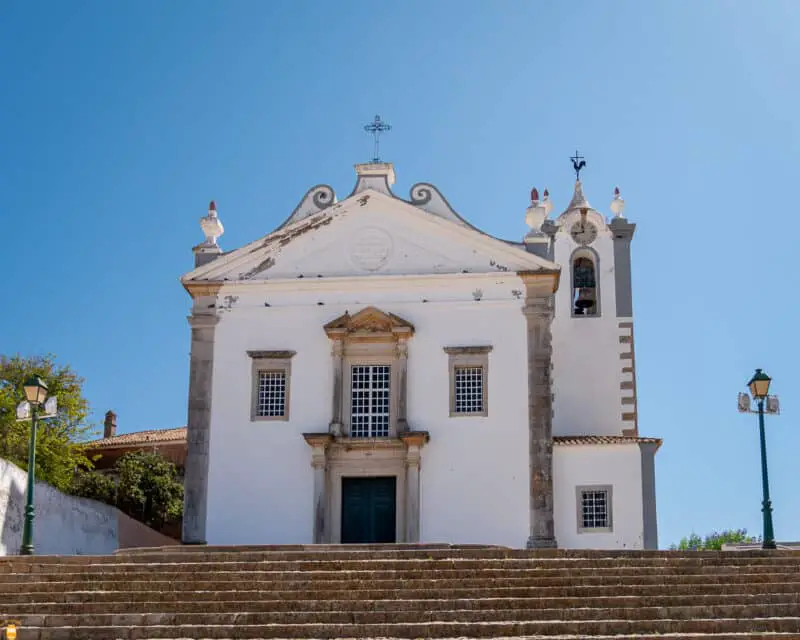
14. Ruínas Romanas de Milreu
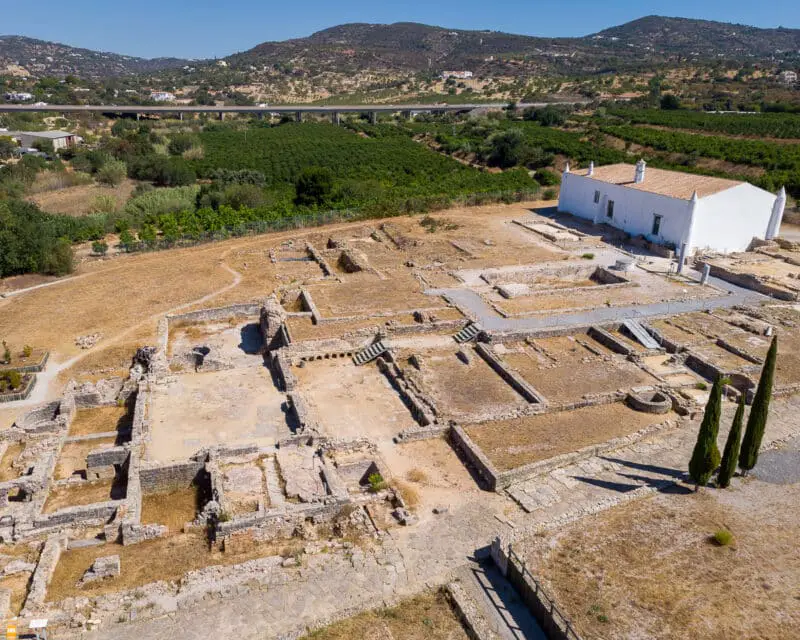
Also in Estói, you can discover some of the best preserved Roman remains in the region. The Roman ruins of Milreu are those of a luxury villa that dates back to the Roman Empire (2nd century AD).
The Roman villa included a large temple and thermal baths. Don’t miss the perfectly preserved fish mosaics, present in one of the bathing tanks.
15. Praia de Faro
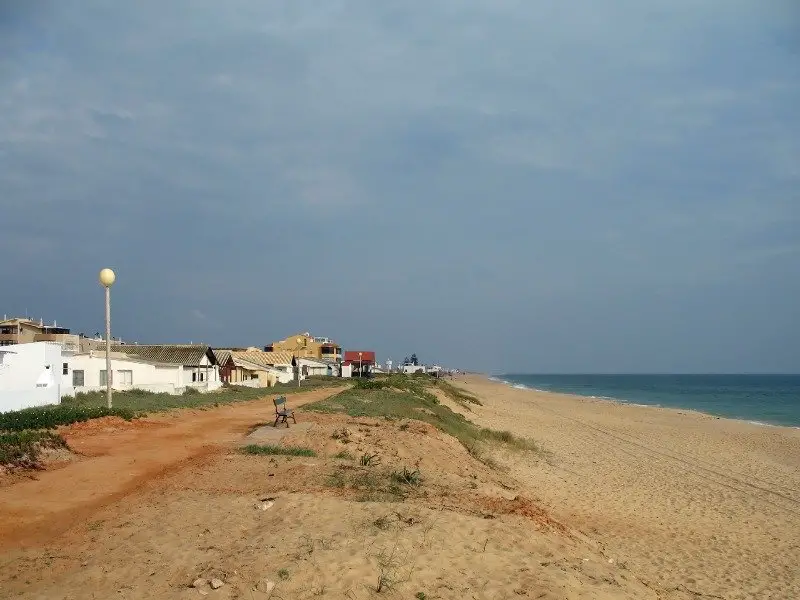
The nearest beach to Faro is located on the island Ilha de Faro, 9 km west of the centre. Very popular in summer, there you will have the possibility to rent surfboards and kitesurf, you will find bars, restaurants, hotels and youth hostels. It is a place of leisure and a beautiful place to admire the splendid sunset over Ria Formosa.
Two bus lines depart from the bus terminal, with great frequency in summer. It is also possible to get there by boat, with a starting point in the city.
16. Ria Formosa
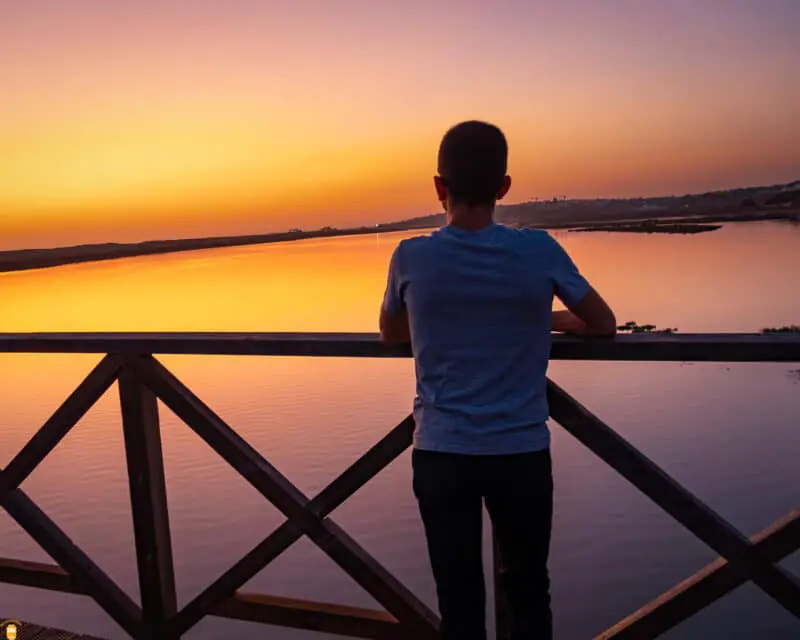
A vast lagoon system that extends 60 km west of Faro to Cacela Velha, Ria Formosa has been classified as a natural park since 1987. Its 18 000 hectares include swamps, salt pans, streams and sandy islands.
It is an important area for migratory and nesting birds and is the ideal place for bird watching tours, walks and you can even feel alone in the world in this natural paradise. You can reach the beaches of the islands by water taxi.
For detailed information on each island in Ria Formosa, my suggestion is that you read the article Ria Formosa – visit Algarve and discover this real natural paradise.
Information: do you want to explore Ria Formosa by bicycle and in the company of an experienced guide? If so, know that this 3-hour activity is perfect for having a different day in Algarve. Whether with family, friends or even alone, discover by bike and on an easy trail some wonders of this natural park close to the city of Faro.
Itinerary to visit Faro and surrounding area
If you visit Faro by car, I suggest you leave your vehicle in the free car park close to the church Igreja de São Francisco. From there, begin your tour with a visit to the church and then continue in the order indicated in the article.
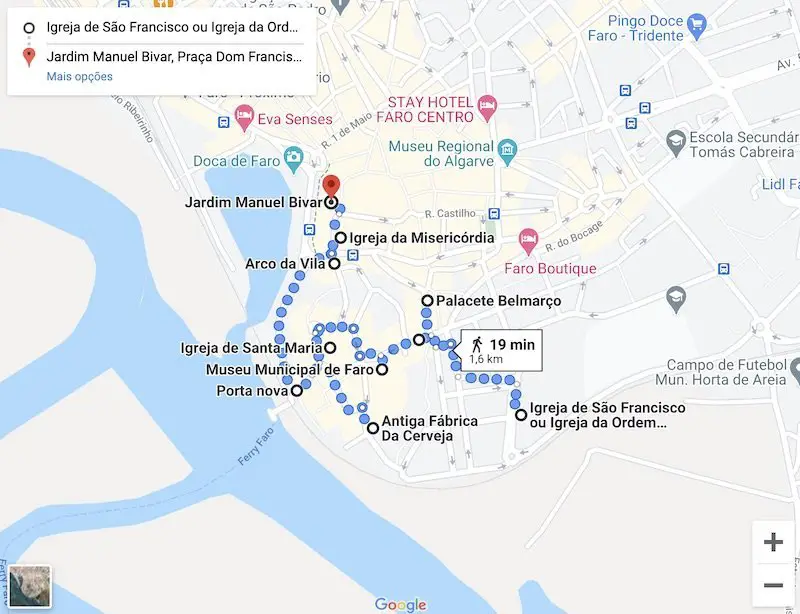
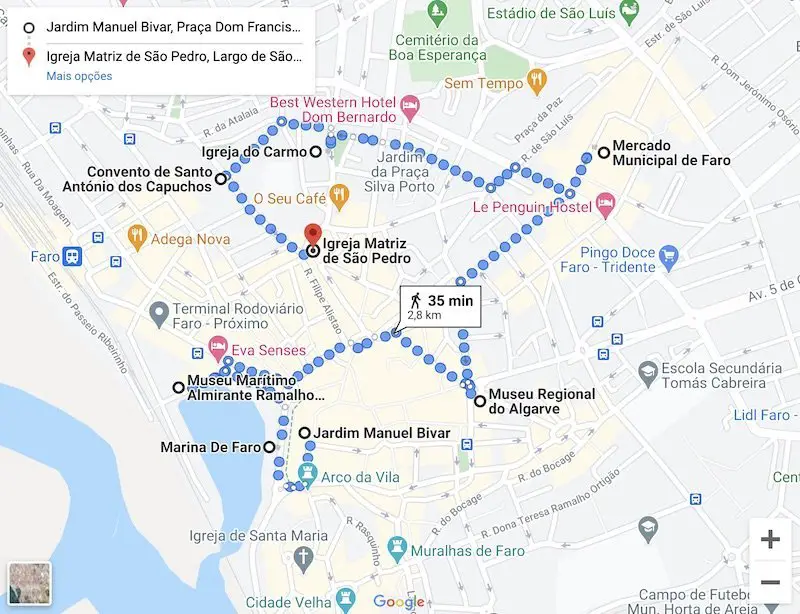

Of course, if you don’t want to explore Faro to the fullest or visit all the 16 points of interest mentioned above, you can create your own itinerary!
To explore Ria Formosa, go to the pier near Porta Nova, next to the square Largo da Sé, on the outskirts of the Old Town. There, you will find many ferries and water taxis.
To get to Estói, located about 10 km from Faro, drive there or take the bus number 65 at the bus station.
Where to sleep in Faro
Stay Hotel Faro*** 8,2/10
This hotel is located 200 metres away from Jardim Manuel Bivar and Faro Marina. Stay Hotel Faro has a bar and free Wi-Fi access everywhere and is one of the best Algarve hotels.
Price: 75 €/night, 2 people
Information: The price mentioned above is merely indicative; if you want to know the exact prices for the different times of the year, please visit the web page of Stay Hotel Faro at Booking.
Hotel Eva**** 8,5/10
Hotel Eva, located in the centre of Faro, has an outside pool in the last floor terrace and a wellness centre with sauna and Turkish bath. The airport and the beach are 10 km away.
Price: 100 €/night, 2 people
Information: The price mentioned above is merely indicative; if you want to know the exact prices for the different times of the year, please visit the web page of Hotel Eva at Booking.
Hotel Faro**** 8,2/10
Located in the centre of Faro, 5 minutes walking distance from the train station and the bus station, this modern hotel offers a beautiful view over the old city, the marina and the Ria Formosa Natural Park. Free Wi-Fi access is available in the hotel.
During summer time, Hotel Faro offers a free shuttle service to Faro beach, where you’ll find the hotel Beach Club.
Price: 110 €/night, 2 people
Information: The price mentioned above is merely indicative; if you want to know the exact prices for the different times of the year, please visit the web page of Hotel Faro at Booking.
Where to eat in Faro
How to get to Faro
Faro International Airport is located 7 km southwest of the city. It is served by 3 to 4 daily flights to Lisbon by the airline TAP, many international flights, including a daily direct flight to Paris with Easyjet, Ryanair or Transavia.
To reach Faro from the airport, you will need to take bus lines 14 and 16. Line 16, that connects the city centre and the beach, is very popular in summer. The trip takes just 15 minutes and there are more than 20 daily trips in the high season.
You can also take a taxi, knowing that a trip from the airport to the city centre will cost around 12 euros. Alternatively, you have the option to rent a car .
It is also possible to reach Faro by train. Expect 3h to 3h30 if travelling from Lisbon-Entrecampos to Faro station, in the city centre. The connection frequency is 5 times a day. By car, the journey from the Portuguese capital on the A2 highway takes approximately 3 hours to cover the 280 km distance.
How to move around in Faro
Public transportation is a good option and there are plenty of affordable taxis. To call a taxi, call 289 895 790. A taxi stop is located in front of the train station.
The company Ilha Deserta offers 2.5-hour tours throughout the year in the Ria Formosa park. Between May and September, there are 4 daily boat connections that can take you to the island Ilha da Barreta. Its pier and water taxi stand are located near Porta Nova.
Click here to download the city map of Faro.
When to visit Faro
The high season in Faro and the rest of the Algarve occurs in July and August. May, June and September are also months frequented by tourists.
Depending on the weather
The average temperature varies from 8 ºC to 17 ºC in winter and from 18 ºC to 29 ºC in summer, the water temperature varies little, from 17 ºC in winter to 23 ºC in August and September.
There are many sunny days in Faro throughout the year. This is one of the clichés in the Algarve and it is true.
The months of June, July and August are the months when it hardly rains in Faro. February, March, April and November are months with up to 8 rainy days. However, October, November and especially December are the most likely to show precipitation.
Depending on the festivities
The Algarve International Music Festival brings together a large number of internationally renowned artists. It takes place in late April, early May, and features classic pieces performed by major Portuguese orchestras.
Faro also organises one of the biggest motorcycle festivals in Europe in mid-July. The Faro International Motorbike Rally (Concentração Internacional de Motos de Faro) attracts thousands of visitors from all over the continent to attend shows every night, featuring famous rock bands.
FolkFaro is, as its name implies, a folk festival, which brings together local and foreign bands. A whole week of music and street parties in the end of August are guaranteed to attract large crowds.
In August, there is also the Festival Ria Formosa, the perfect festivity to discover local food and traditional drinks.
As for traditional religious festivals, the fair Feira de Santa Iria takes place in late October. A fair and numerous events honor Santa Iria during the most important traditional festival in Faro.
Best time to visit Faro
If you want to avoid an expensive stay in the Algarve, avoid the high season (July and August) and New Year’s Eve. Visit the Algarve between January and June and in September and October.
If you want to avoid the high season, the spring months (from April onwards) and the beginning of autumn are naturally the best months to visit Faro and enjoy the mild climate of the south coast of Portugal, while avoiding the crowds. However, Faro can be easily visited throughout the year.
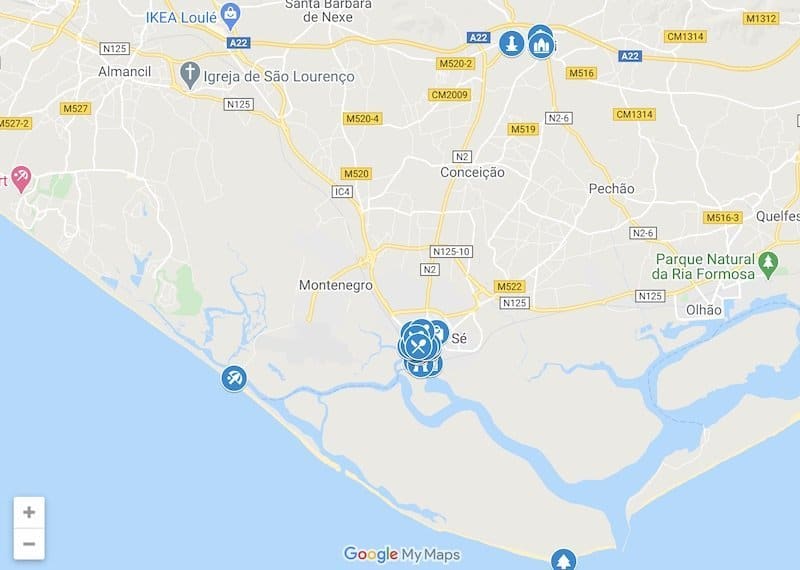
Are you going to visit Faro? Then don’t hesitate to book your hotel room, your car or the best activities by clicking the links below. This way you are helping me in the development of my blog and I’ll be able to offer you free tips and travel guides so that you can better prepare your visit to Portugal. Thank you!
What will also interest you:
- Visit Algarve and discover my top 20 of the places you can’t miss
- Algarve itinerary – discover this region in 6 amazing days
- Top of the best Algarve tours – explore the coastline and the countryside
- What to do in Lagos, a paradise to discover in western Algarve!
- Discover the things to do in Portimão, one of the wonders in Algarve
- What to do in algarve: check here what you can see in 5 days
- Top 3 of the best place to stay in Algarve
- 5 Day Itinerary in the Algarve: Serra de Monchique, Lagos and Silves
- 5 Day Itinerary in the Algarve: Cape Saint Vincent and Beliche Beach
- Top 10 of the best Algarve beaches

